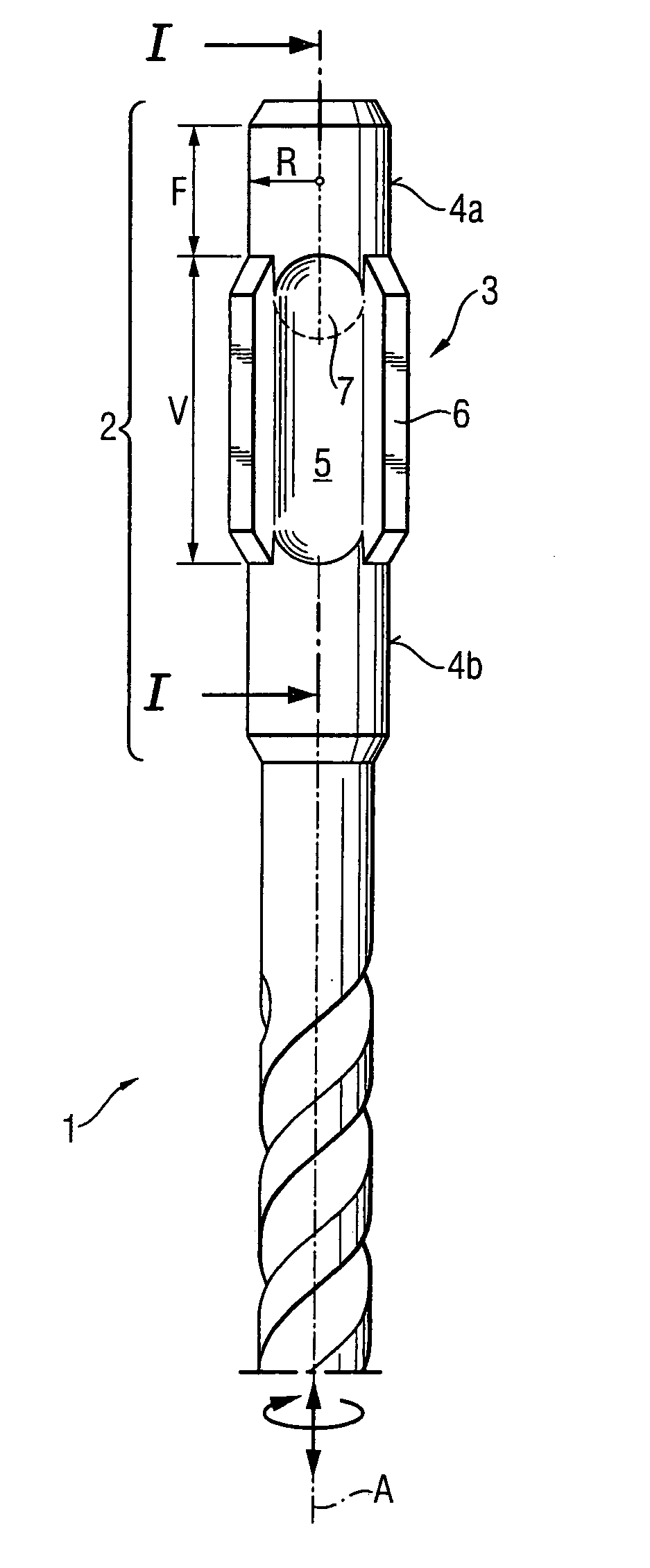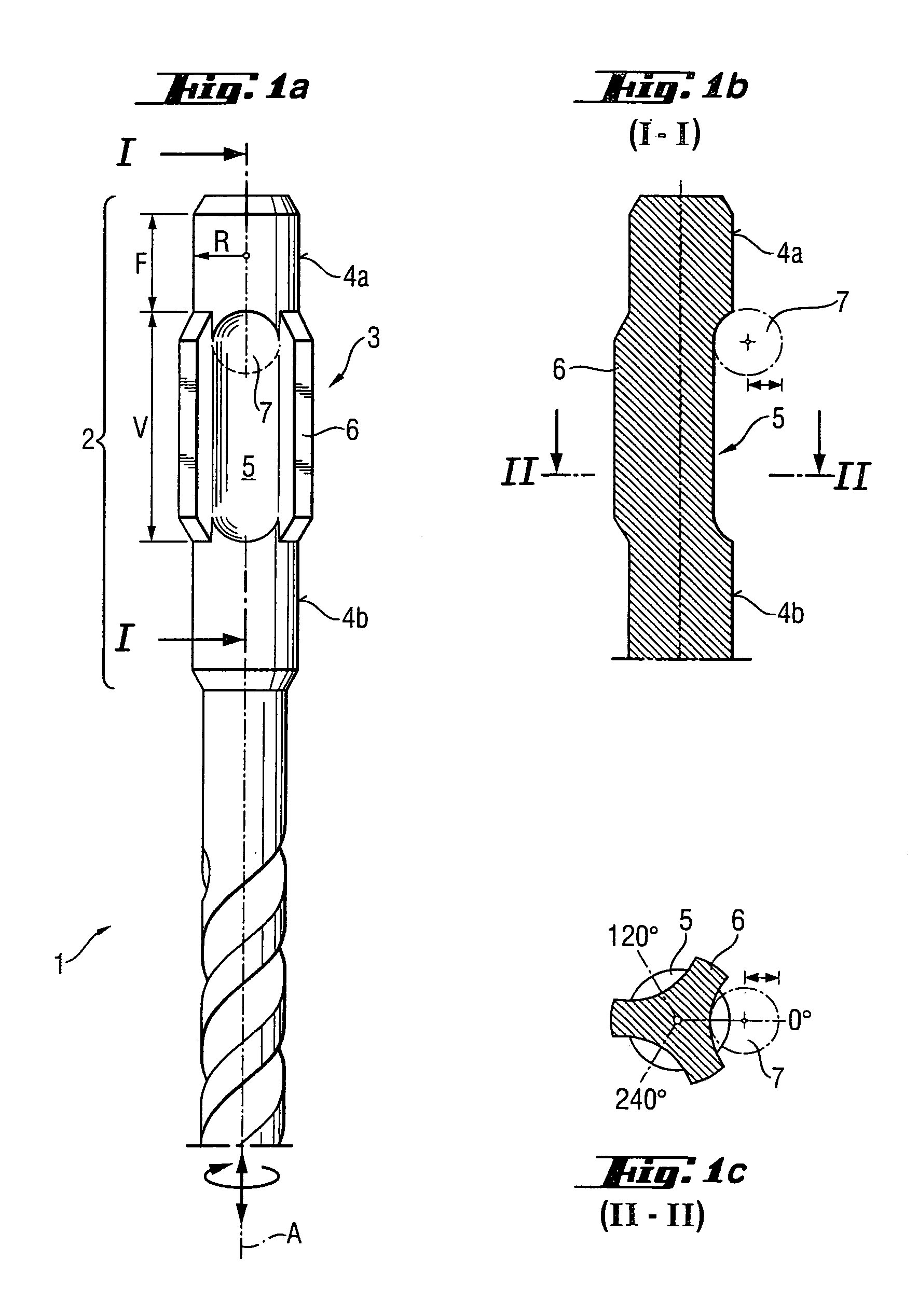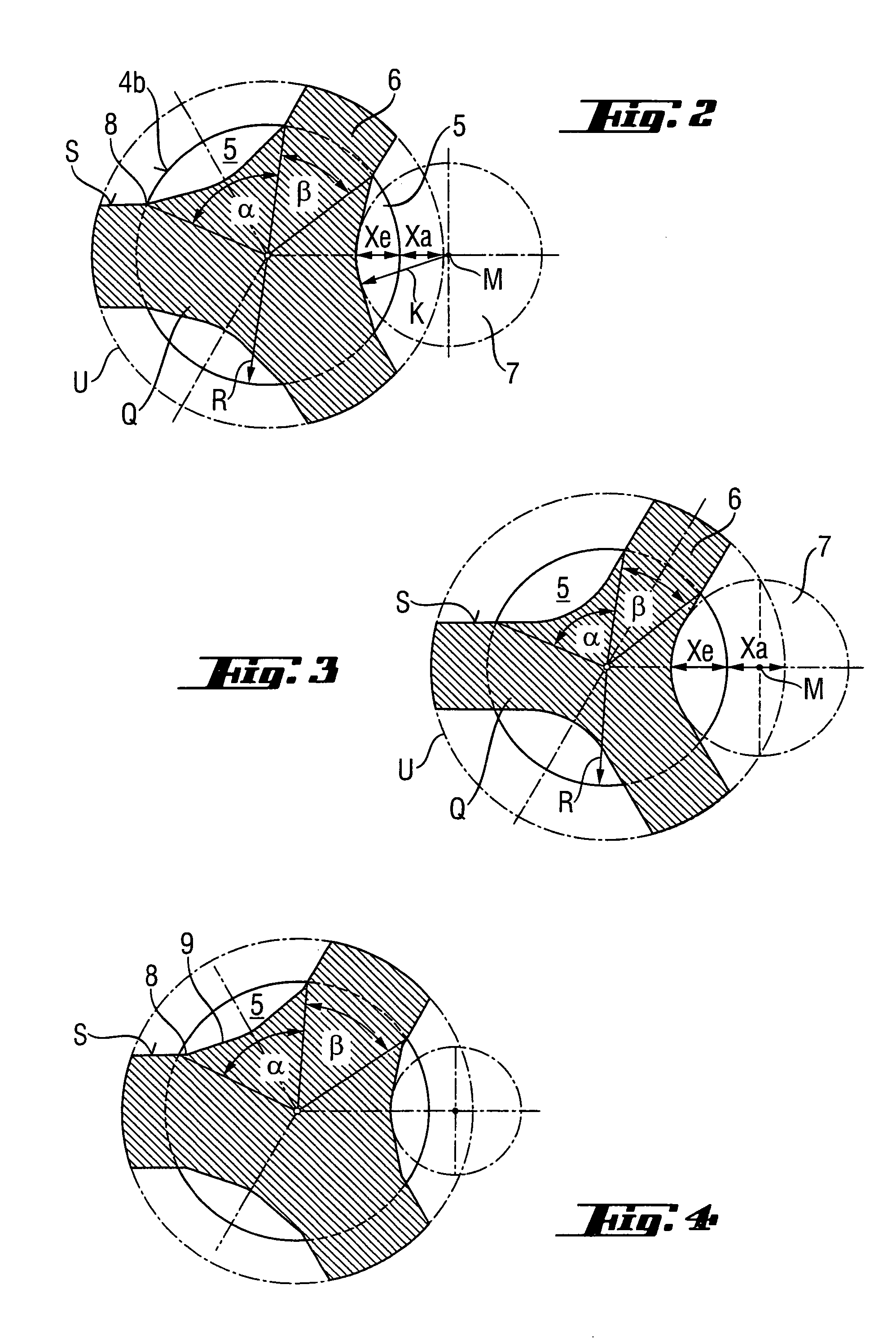Shank for a rotary/percussion tool
a rotary/percussion tool and chuck technology, applied in the field of chuck, can solve the problems of weak pulse transmission, large wear, rapid wear, etc., and achieve the effect of facilitating insertion of the tool in the associated chuck, reducing wear, and substantially increasing the transmission torqu
- Summary
- Abstract
- Description
- Claims
- Application Information
AI Technical Summary
Benefits of technology
Problems solved by technology
Method used
Image
Examples
Embodiment Construction
[0034]A working tool 1, which can be formed as a drill or chisel rotatable about an axis A and percussively displaceable therealong and which is shown in FIGS. 1a, 1b, 1c, has a shank 2 with a radial reference dimension or radius R and an axial lockable region 3. On both axial sides of the lockable region 3, there are provided two guide surfaces 4a, 4b formed as cylindrical surfaces and having along their axial extent along the axis A a constant radius equal to the radial reference dimension R. Within the lockable region 3, there are provided three stamped-out or otherwise formed recesses 5 closed at their respective opposite axial ends. The guide surface 4a extending toward the free end of the shank 2, has an axial length F that amounts to a double of the radial reference dimension R. The recesses 5 lie inwardly with respect to the radial reference dimension R. The three recesses 5 are associated with three, circumferentially and alternatingly arranged, with respect to the recesses...
PUM
| Property | Measurement | Unit |
|---|---|---|
| angles | aaaaa | aaaaa |
| angles | aaaaa | aaaaa |
| angles | aaaaa | aaaaa |
Abstract
Description
Claims
Application Information
 Login to View More
Login to View More - R&D
- Intellectual Property
- Life Sciences
- Materials
- Tech Scout
- Unparalleled Data Quality
- Higher Quality Content
- 60% Fewer Hallucinations
Browse by: Latest US Patents, China's latest patents, Technical Efficacy Thesaurus, Application Domain, Technology Topic, Popular Technical Reports.
© 2025 PatSnap. All rights reserved.Legal|Privacy policy|Modern Slavery Act Transparency Statement|Sitemap|About US| Contact US: help@patsnap.com



